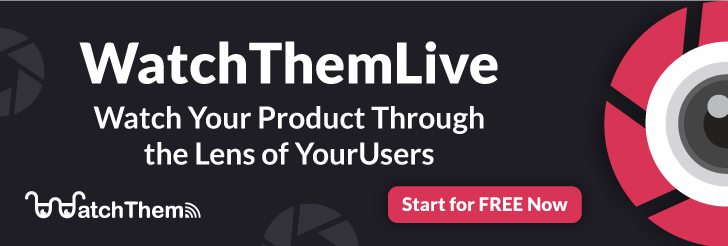Page Contents
You might have heard of UX strategy, but do you know what it exactly means?
The design of a user experience (UX) includes the development of a digital product. The plan to do so is provided by UX strategy. A user experience strategy is a comprehensive plan for aligning a company’s brand identity with the intended user experience at each customer touchpoint. This strategy should be in place before any design work starts to be successful.
Related Article: Using CRAP Design Principles for Creating a Great UX Design [Infographic]
This post will look at UX strategy, why it is essential to have a UX designer, and how to create a successful UX strategy for any product or service you are making.
What is included in UX strategy?
In her book, UX Strategy: How to Devise Innovative Digital Products That People Want, Jaime Levy outlines four tenets (essential components that work together to make a strategy successful) of UX strategy.
-
Business Strategy
These are the firm’s guiding principles, competitive advantage, income sources, and high-level corporate goals.
-
Value Innovation
Companies accomplish value innovation by seeking value for consumers (differentiation) while simultaneously lowering expenses for the firm.
-
Validated User Research
Before beginning a design, get direct feedback from your target customers rather than presuming what is helpful to a consumer. This saves designers and businesses time, money, and effort on a product that no one wants.
-
Killer User Experience Design
Once the previous tenets have been established, it is time to create an outstanding user experience that focuses on the product’s main characteristics. This experience should not only provide value to the client, but it should also do it seamlessly.


Click here to sign up for FREE and start using WatchThemLive to record your viewer’s sessions! You can escalate your conversion rates in a way you have never seen before!
Why is UX strategy important?
A strong UX strategy ensures that a product team remains focused on addressing the correct issue for their target customers. When you make an effort to develop a UX strategy, you may discover that it produces many additional advantages.
- It secures the support of executives. A UX strategy connects the intended design to business goals, assisting leadership books in seeing the value in what you’re doing.
- It synchronizes corporate objectives, user requirements, and technology capabilities. This may aid in the prioritization of time and resources during the design process.
- It provides unambiguous success measurements. Knowing what success looks like from the start—and how you’ll evaluate it—makes gauging the effect of design choices to keep the product going in the right direction much simpler.
- It fosters a user-first mindset. Validated user research allows UX team members to understand the user better, including their pain spots and objectives.
- It links all pieces of a contact. UX strategy encourages you to take a step back and consider all of the ways a user interacts with your product or brand.
How can I become a UX strategist?
As more businesses realize the benefits of intelligent UX design, the jobs engaged in UX are becoming increasingly distinct. The job of a UX strategist is one of these specialist professions. As a UX strategist, you act as a liaison between the business and the user by assisting the design team in developing user-focused products that are consistent with the company’s strategy and brand identity.
Because user research is such an essential element of creating a UX strategy, being a UX researcher may be a smart first step toward a career as a UX strategist. If you want to go into the strategy side of UX, here are some skills to work on:
UX Research
Understanding qualitative and quantitative research techniques mean that you can verify your approach.
Negotiation
Your work will include balancing the user’s demands with corporate objectives.
Design Thinking
A solid foundation in UX design best practices may help you tackle design challenges more creatively and productively.
Communication
Learning more about company stakeholders and target customers is a crucial element of creating a UX strategy.
Leadership
As a UX strategist, you will often serve as a leader in the design team.
To be a successful leader in today’s rapidly evolving corporate environment, you need to be well-versed in all aspects of the role, from team building to effective communication. So you may add some leadership books to your reading list In order to push your organization to new heights.
Business Acumen
Understanding business strategy equips you to bridge the gap between the user and the firm.
How do you create a UX strategy?
Whether you want to start a career in UX or you’re currently a UX designer, the ability to create a successful UX strategy may be a useful (and marketable) talent. Before beginning your next design project, go through these stages to develop your UX strategy.
-
Define business strategy through stakeholder interviews.
Involve decision-makers and business executives early in your project. As a UX designer, you’re frequently, and rightly, focused on the user. Now is the time to focus on the business side of things.
What is the market position of the product you’re designing? What are the high-level aims and objectives of the company? How are stakeholders assessing the product’s success?
When you answer these questions early, you guarantee that you’re doing it with the brand and business in mind when you shift your focus to the user.
-
Determine ways to distinguish yourself by doing competitive research and analysis.
Once you understand how to connect your design with the company’s brand and strategy, you can begin to evaluate the product’s position in the competitive environment. To entice a consumer to utilize your product, you must provide value. What will be the source of the value? What distinguishes you from the competition?


WatchThemLive provides you with amazing session replays. However, it is not only that! WatchThemLive offers detailed and comprehensive heatmaps, detailed analytics, sales funnels, and a lot more. We offer the most impressive services when it comes to price, functionality, and maintainability. Click here to sign up for FREE and boost your business in the easiest way possible!
Investigate what is currently on the market to meet this consumer requirement, and consider the main elements that will set your design apart from the competition.
-
Maintain a user-centered approach by doing verified user research.
Make sure you’re creating a product that people want to utilize. Get early input from your target users to do this. There are many methods for doing this, including surveys and questionnaires, focus groups, A/B testing, card sorting, interviews, and field research.
Validate the value you believe your product will provide to actual consumers. If the evidence does not support your anticipated value, take a step back and reconsider your product.
-
Establish precise design objectives to reach where you want to go.
It is just as essential to know where you want to go as it is to see where you are now. Define some precise metrics for measuring the success of your design using the data you’ve collected from both users and stakeholders. Be precise about what you want to do, how you intend to accomplish it, and how you’ll know if and when you’ve achieved it.
-
Conduct organized experiments and iterate on the outcomes.
Designing that ideal product that people like often requires a willingness to try and fail. Allow your UX approach to drive your efforts as you go through your design. As you work, continue to verify both the strategy and your design. Create a minimal viable product (MVP), test it with actual consumers, and then improve on the feedback.
Conclusion
It takes a lot of planning, research, testing, and money to create an innovative and user-friendly product. Design teams may easily get bogged down by inefficient research techniques, misdirected user testing, lengthy revisions, or even losing sight of broader business objectives.
Using a well-curated UX approach helps to avoid these blunders, as well as the money spent in correcting development mistakes, misunderstanding among team members, or creating a product that fails.
Starting with a clear and thorough UX strategy may mean the difference between a product that has long-term success and one that falls short!

